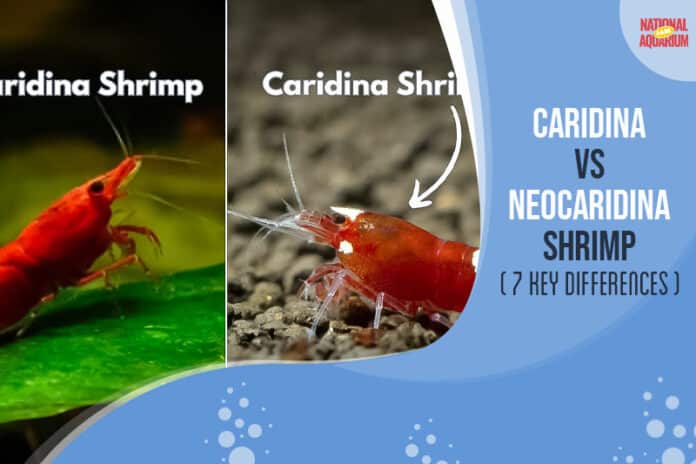Which should be the right choice for our tank: the Caridina or the Neocaridina? This question has been debated among shrimp enthusiasts.
So, what sets these two shrimp varieties apart? In this piece, National Park Aquarium are diving deep into both Caridina and Neocaridina shrimp, weighing their strengths and weaknesses. As we delve into each type, by the conclusion, you’ll have a clearer picture of which shrimp might best suit your aquarium’s ecosystem.
What to Know About The Caridina and Neocaridina
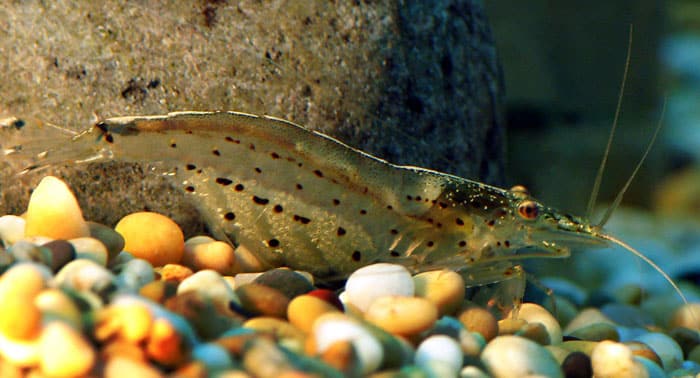
1. Two Different Species
The first thing to understand about Caridina and Neocaridina shrimp is that they are two different species.
Caridina shrimp are native to Southeast Asia, whereas Neocaridina shrimp are found in China and Japan.
2. Both Are Freshwater Crustaceans
Both Caridina and Neocaridina share many common traits – for example, they are both freshwater crustaceans, meaning that they can be housed in a typical aquarium setting, as well as in outdoor ponds or pools.
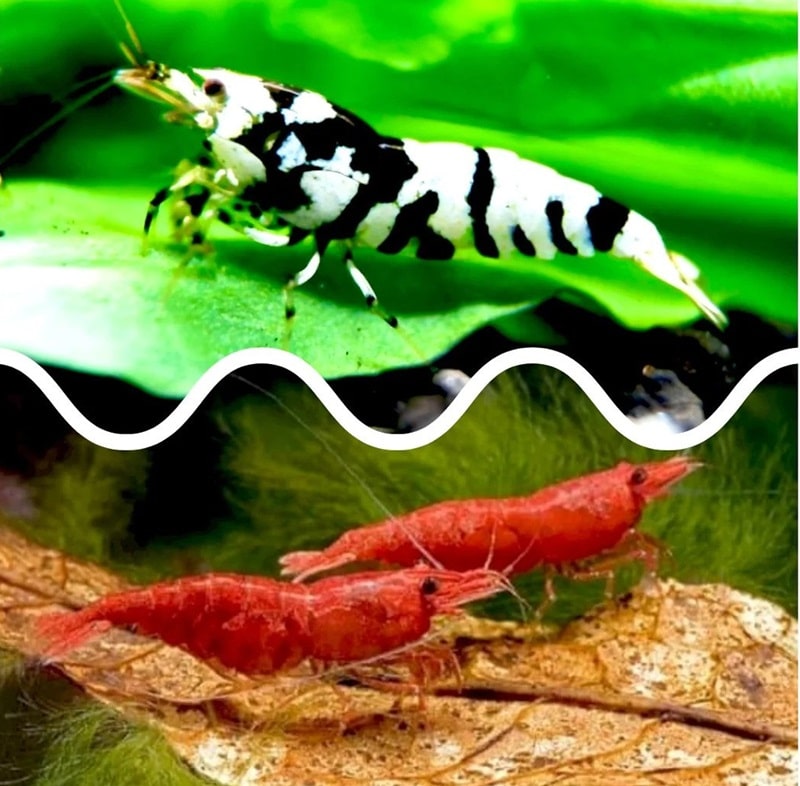
3. Pretty Similar Care Requirement
They require a clean environment with plenty of space to explore, as well as some hiding places so that they feel safe.
They thrive when kept in groups with other shrimp, although it’s important to note that they can be territorial, so it’s best to keep them with shrimp of the same species.
4. They Are Good Cleaners
Both Caridina and Neocaridina shrimp are good cleaners, helping keep your aquarium or pond clean and free of algae.
So far, Caridina and Neocaridina shrimp are similar. However, you should be aware of some key differences between these two types of shrimp before deciding which is right for you.
Caridina vs. Neocaridina Shrimp Comparison
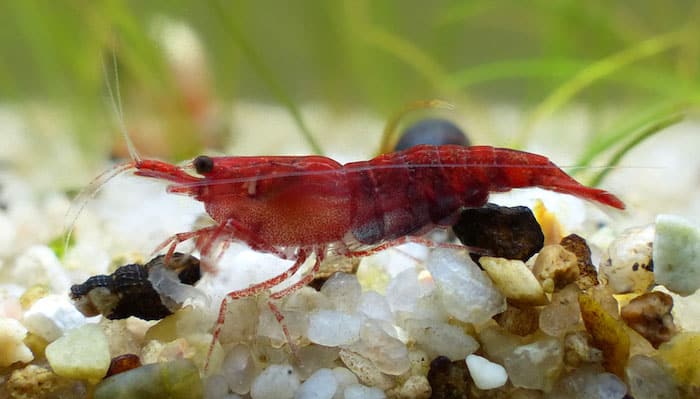
1. Caridina and Neocaridina Appearance
Actually, it’s extremely difficult to notice the differences in appearance, typically the colors of these two shrimps with our bare eyes. However, many say that Caridina shrimp are typically more colorful than Neocaridina shrimp.
The Caridina shrimp features a distinct dorsal stripe that separates its body from its legs.
Whereas the Neocaridina shrimp does not have this feature.
You can try to differentiate them through these typical signs, however, do not be disappointed if you cannot tell them apart immediately.
2. Different Behavior
Caridina shrimp are generally more active than Neocaridina shrimp and are known to be very good swimmers. They are also more likely to jump out of the water than their Neocaridina counterparts.
Neocaridina shrimp, on the other hand, are known to be more sedentary and tend to stay close to the bottom of the tank or pond.
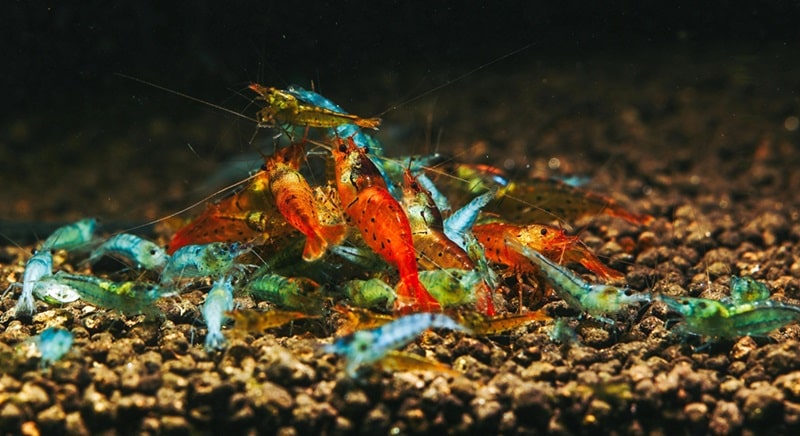
3. Caridina vs Neocaridina Size
A slightly more obvious difference between Caridina and Neocaridina shrimp is their size.
Caridina shrimp tend to be larger than Neocaridina shrimp, with adults reaching up to 2 inches in length. This makes them a better choice for larger aquariums or outdoor ponds, where they have the space to thrive.
On the other hand, Neocaridina shrimp are much smaller, with adults typically reaching more than 1 inch in length. Because of their small size, Neocaridina shrimp are better suited for smaller indoor tanks or other small areas where they won’t feel cramped.
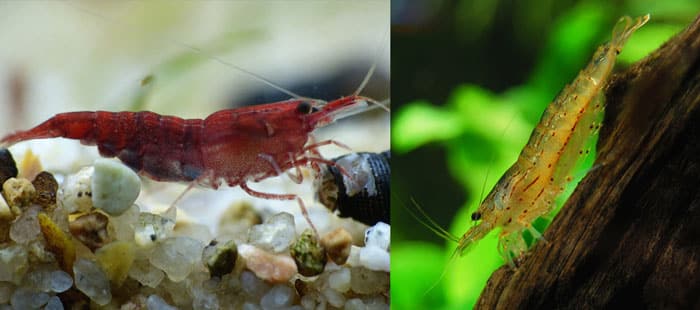
4. Average Lifespan
Caridina shrimp typically have a lifespan of 1-2 years, while Neocaridina shrimp can live for 2-3 years.
This makes Neocaridina shrimp a better choice if you want a long-term addition to your aquarium or pond.
5. Omnivorous and Restrictive Diets
Caridina shrimp are typically omnivorous and will eat various foods, including vegetables, fruits, and commercial shrimp pellets.
Neocaridina shrimp tend to have slightly more specialized diets, focusing on eating plant matter and algae.
This means that it’s important for Neocaridina shrimp owners to ensure that there is plenty of vegetation in the tank or pond so that the shrimp can get enough nutrients from plants rather than other sources.
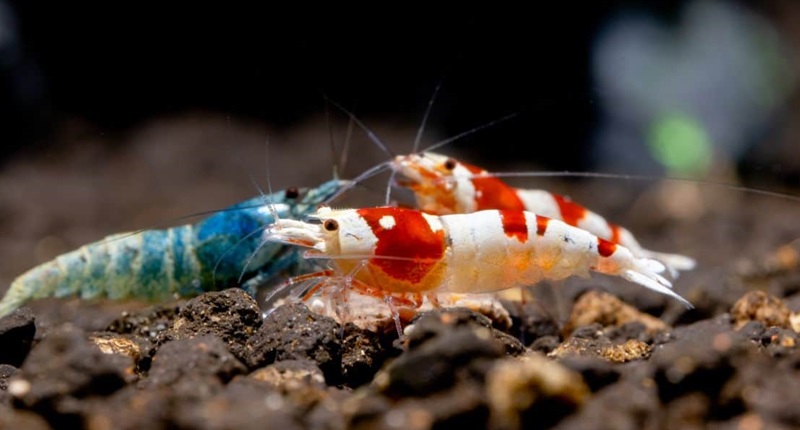
6. Breeding Difficult & Easy
Caridina shrimp are known to be difficult to breed in captivity, whereas Neocaridina shrimp are relatively easy to breed. This is because Caridina shrimp require specific water conditions and a high-protein diet to breed successfully.
In contrast, Neocaridina shrimp are much more tolerant of different water conditions and do not require a special diet.
Tips to Caring for Caridina and Neocaridina Shrimp
You can refer to this table to modify the water parameters in your tank to care for Cardina and Neocardina shrimps:
| Neocaridina | Caridina | |
| Temperature | 65°F – 84°F (18.3°C – 29°C) | 64°F – 76°F (17.8°C – 24.5°C) |
| pH level | 6.5 – 8 | 6 – 7.5 |
| Total Dissolved Solids | 200ppm – 300 ppm | 100 ppm – 200ppm |
| General Hardness (dGH) | 4 – 8 | 4 – 6 |
| Total Alkalinity (dKH) | 3 – 15 | 0 – 2 |
Caridina shrimp are a good choice for those who want an active and interesting addition to their aquarium or pond. However, they require a higher protein diet than Neocaridina shrimp and may need to be supplemented with additional food items.
If you’re looking for an active, hardy, and entertaining pet, then Caridina shrimp may be the better choice. It is also easier to care for.
Source: RW Aquarium Pages
Conclusion
So, which is right for you? It depends on your personal preferences. Many argue that they are of the same species but actually are not. Therefore, they will require different care and water conditions to survive.
Do you have experience with Caridina and Neocaridina shrimp? Let us know in the comments below!
See More:
- 7 reasons ghost shrimp die (and what to do)
- Camel shrimp vs peppermint shrimp
- Amano shrimp vs cherry shrimp

